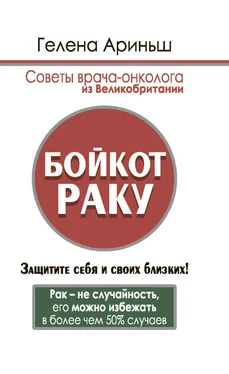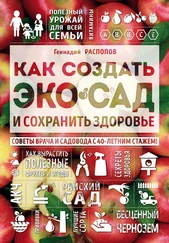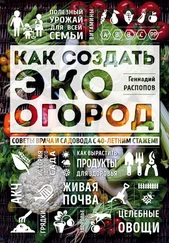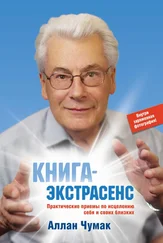39. U.S. Department of Health and Human Services (1986). The Health Consequences of Involuntary Smoking: a Report of the Surgeon General.Washington, DC: U.S. Department of Health and Human Services. Public Health Service, Office on Smoking and Health.
40. IARC (2004). Tobacco smoke and involuntary smoking. IARC Monogr Eval Carcinog Risks Hum 2004; 83: 1–1438.
41. Peto R. Mortality from smoking in developed countries 1950–2000; indirect estimates from national vital statistics.Oxford University Press, 1994.
42. Alberg AJ, Samet JM. Epidemiology of lung cancer. Chest. 2003; 123 (1 Suppl): 21S–49S.
43. Khuder SA, Mutgi AB. Effect of smoking cessation on major histologic types of lung cancer. Chest 2001; 120: 1577–83.
44. Parsons A, Daley A, Begh R, Aveyard P. Influence of smoking cessation after diagnosis of early stage lung cancer on prognosis: systematic review of observational studies with meta-analysis. BMJ 2010; 340: b5569.
45. Sturgis EM, Pytynia KP. After the smoke clears: environmental and occupational risks for carcinoma of the upper aerodigestive tract. Cancer J 2005; 11: 96–103.
46. Schlecht NF, Franco EL, Pintos J, Kowalski LP . Effect of smoking cessation and tobacco type on the rosk of cancers of the upper aero-digestive tract in Brazil. Epidemiology 1999; 10: 412–418.
47. Johnston LD, O’Malley PM, Bachman JG. Monitoring the Future National Survey Results on Drug Use, 1975–1998: Vol. 2. College Students and Young Adults. Washington, DC: National Institute on Drug Abuse, U.S. Department of Health and Human Services, National Institutes of Health, 1999.
48. Mia Hashibe, Daniel E. Ford, Zuo-Feng Zhang . Marijuana Smoking and Head and Neck Cancer. Journal of Clinical Pharmacology , 2002; 42: 103S–107S.
49. Hoffmann D, Brunneman DK, Gori GB, Wynder EL. On the carcinogenicity of marijuana smoke. Recent Adv Phytochem 1975; 9: 63–81.
50. Wu TC, Tashkin DP, Djahed B, Rose JE . Pulmonary hazards of smoking marijuana as compared with tobacco . N Engl J Med 1988; 318: 347–351.
51. Gong H Jr, Fligiel S, Tashkin DP, Barbers RG. Tracheobronchial changes in habitual, heavy smokers of marijuana with and without tobacco. Am Rev Respir Dis 1987; 136: 142–149.
52. IARC. IARCMonographs on the Evaluation of the Carcinogenic Risk of Chemicals to Humans: Tobacco Smoking. Lyon, France: WHO, 1986.
53. Hartge P., Silverman D., Hoover R., Schairer C., Altman R., Austin D.,Cantor K., Child M., Key C., Marrett L. D.,et al. Changing cigarette habits and bladder cancer risk: a case-control study. J Natl Cancer Inst 1987; 78: 1119–1125.
54. Burch J. D., Rohan T. E., Howe G. R., Risch H. A., Hill G. B., Steele R., and Miller A. B. Risk of bladder cancer by source and type of tobacco exposure: a case-control study . Int J Cancer 1989; 44: 622–628.
55. Clavel J., Cordier S., Boccon-Gibod L., and Hemon D. Tobacco and bladder cancer in males: increased risk for inhalers and smokers of black tobacco . Int J Cancer 1989; 44: 605–610.
56. Morrison A. S., Buring J. E., Verhoek W. G., Aoki K., Leck I., Ohno Y., and Obata K. An international study of smoking and bladder cancer. J Urol 1984; 131: 650–654.
57. Taylor J. A., Umbach D. M., Stephens E., Castranio T., Paulson D., Robertson C., Mohler J. L., and Bell D. A. The role of N-acetylation polymorphisms in smoking-associated bladder cancer: evidence of a gene-gene-exposure three-way interaction. Cancer Res 1998; 58: 3603–3610.
58. Volume 83: Tobacco smoke and involuntary smoking. Lyon: International Agency for Research on Cancer; 2004. IARC Monographs on the Evaluation of Carcinogenesis Risks to Humans.
59. U.S. Department of Health and Human Services. The Health Consequences of Smoking: A report of the Surgeon General.Atlanta, GA: Centers for Disease Control and Prevention, National Center for Chronic Disease Prevention and Health Promotion, Office on Smoking and Health; 2004.
60. Hunt JD, et al . Renal cell carcinoma in relation to cigarette smoking: meta-analysis of 24 studies. Int J Cancer . 2005; 114: 101–108.
61. Chow W-H, Devesa SS. Contemporary epidemiology of renal cell cancer. The Cancer J. 2008; 14: 288–301.
62. Simona Iodice, Sara Gandini, Patrick Maisonneuve, Albert B. Lowenfels. Tobacco and the risk of pancreatic cancer: a review and meta-analysis. Langenbeck’s Archives of Surgery 2008, Volume 393, Issue 4, pp 535–545.
63. Faber MT, Kjær SK, Dehlendorff C, Chang-Claude J, Andersen KK, Høgdall E, Webb PM, Jordan SJ; Australian Cancer Study (Ovarian Cancer); Australian Ovarian Cancer Study Group, Rossing MA, Doherty JA, Lurie G, Thompson PJ, Carney ME, Goodman MT, Ness RB, Modugno F, Edwards RP, Bunker CH, Goode EL, Fridley BL, Vierkant RA, Larson MC, Schildkraut J, Cramer DW, Terry KL, Vitonis AF, Bandera EV, Olson SH, King M, Chandran U, Kiemeney LA, Massuger LF, van Altena AM, Vermeulen SH, Brinton L, Wentzensen N, Lissowska J, Yang HP, Moysich KB, Odunsi K, Kasza K, Odunsi-Akanji O, Song H, Pharaoh P, Shah M, Whittemore AS, McGuire V, Sieh W, Sutphen R, Menon U, Gayther SA, Ramus SJ, Gentry-Maharaj A, Pearce CL, Wu AH, Pike MC, Risch HA, Jensen A; Ovarian Cancer Association Consortium . Cigarette smoking and risk of ovarian cancer: a pooled analysis of 21 case-control studies. Cancer Causes Control 2013; 24(5): 989–1004.
64. Rossing MA 1, Cushing-Haugen KL, Wicklund KG, Weiss NS. Cigarette smoking and risk of epithelial ovarian cancer. Cancer Causes Control 2008; 19(4): 413–20.
65. Susan J. Jordan, David C. Whiteman, David M. Purdie, Adèle C. Green, Penelope M. Webb. Does smoking increase risk of ovarian cancer? A systematic review. Gynecologic Oncology 2006; Volume 103, Issue 3, Pages 1122–1129.
66. World Helath Organization,World Cancer Report 2014; pp 92–93.
Глава 5. Физическая нагрузка и рак
Физическая активность – это движение тела в результате работы скелетной мышечной системы, ведущее к увеличению расхода энергии выше базального (основного) уровня. В результате физической активности наблюдаются изменения на уровне мышечной системы и метаболизма (обмена веществ). Происходит увеличение числа и размера мышечных волокон за счет повышенного притока крови. В клетках увеличивается число митохондрий, отвечающих за продукцию энергии. Повышается способность мобилизовать жирные кислоты из жировой ткани (10). Иммунная система также увеличивает свои защитные свойства в результате физической нагрузки (11).
Умеренная физическая активность увеличивает функцию иммунной системы (клеток натуральных киллеров, активность Т и Б лимфоцитов, а также моноцитов), – в результате снижается вероятность инфекций и некоторых типов рака (12–15).
Читать дальше
Конец ознакомительного отрывка
Купить книгу












